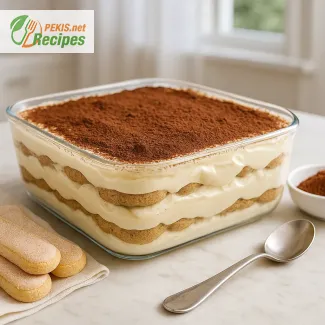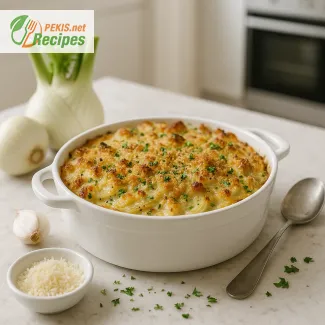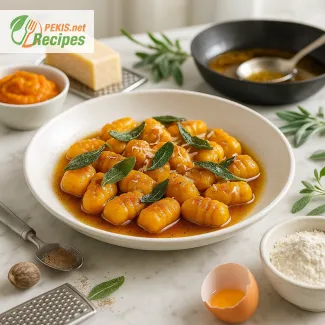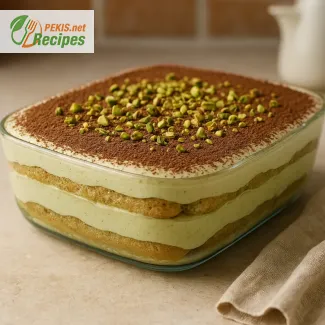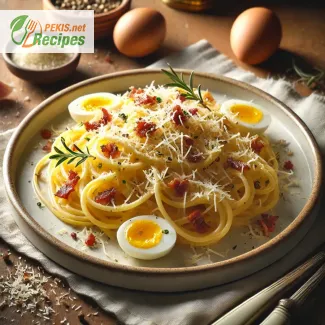
Italian Carbonara with Eggs and Pecorino Romano Cheese is one of the most cherished dishes in Italian cuisine. A true classic from Rome, this pasta is beloved worldwide for its creamy, savory taste and its unique preparation that celebrates simplicity. The beauty of carbonara lies in its minimalistic ingredients—no cream, no garlic, no onions, just pasta, eggs, Pecorino Romano cheese, and pancetta (or guanciale if you’re aiming for true authenticity). With this simple combination, Italian carbonara achieves a depth of flavor that few pasta dishes can match, creating an experience that is both comforting and elegant.
Carbonara's history is wrapped in mystery and legend, often tied to Rome's history. Some say it originated during World War II, when American soldiers stationed in Italy brought rations of bacon and powdered eggs, inspiring local cooks to incorporate them into pasta. Others argue it’s much older, crafted by Roman shepherds who used guanciale and Pecorino to create a nutritious, satisfying meal during long days in the countryside. Whatever its origins, today carbonara stands as a testament to Italian culinary artistry, balancing simplicity with sophistication.
The key to an authentic Italian carbonara lies in its preparation. Traditional recipes insist on cooking without cream, allowing the eggs and Pecorino Romano to create a natural sauce that clings to each strand of pasta. The pasta water plays an essential role, helping emulsify the cheese and eggs to create a velvety texture that is neither too thick nor too thin. Adding the pasta water gradually is crucial to achieving the perfect consistency, a technique that might take practice but is worth mastering for the final result. The eggs must be gently tempered with hot pasta rather than exposed to direct heat, which can cause them to scramble. This technique requires care and patience, but it’s the secret to getting that coveted silky sauce.
Pecorino Romano, the star cheese in this dish, lends its unique flavor profile—sharp, salty, and earthy—giving Italian carbonara its distinct character. Unlike Parmigiano Reggiano, which is milder, Pecorino’s robust taste pairs beautifully with the smoky, savory notes of pancetta or guanciale. This combination brings a depth of flavor that’s unparalleled in other pasta dishes. For those seeking a lighter flavor, Parmesan can sometimes substitute, but traditionalists will attest that Pecorino is the key to the dish’s true soul.
One of the remarkable aspects of Italian carbonara is its nutritional richness. Unlike pasta dishes laden with heavy cream or butter, carbonara’s sauce relies on eggs, which provide essential proteins and healthy fats. Pecorino, while rich, also adds calcium and other vital minerals, giving the dish a satisfying quality without excessive heaviness. Pancetta or guanciale contributes flavorful fats and a small amount of protein, complementing the eggs and cheese for a balanced indulgence.
Serving Italian carbonara properly is also an art. The dish is best enjoyed freshly made, as it can lose its silky texture if left to sit. A generous sprinkle of freshly ground black pepper is essential, as it adds a peppery contrast to the creaminess of the sauce and balances the richness of Pecorino. Some chefs like to add a sprinkle of Pecorino on top, allowing diners to appreciate the cheese in every bite. Pairing Italian carbonara with a crisp white wine or a light Italian red like Chianti or Barbera enhances its flavors, creating a harmonious dining experience that transports you straight to Rome’s bustling trattorias.
Italian carbonara is more than just a meal; it’s a cultural experience and a celebration of simplicity and quality. This dish invites home cooks and professional chefs alike to appreciate the art of Italian cooking, where the focus is not on fancy ingredients or complex techniques but on elevating basic ingredients to their fullest potential.
- Boil the Pasta: Bring a large pot of salted water to a boil. Add the pasta and cook until al dente according to the package instructions (usually 8-10 minutes).
- Prepare the Guanciale: While the pasta is cooking, place the diced guanciale in a large pan over medium heat. Cook slowly, allowing the fat to render out, until the guanciale is crispy (about 5-7 minutes). Turn off the heat and set aside. Leave the fat in the pan for added flavor.
- Prepare the Egg Mixture: In a medium bowl, whisk together the eggs and Pecorino Romano cheese until smooth. Add a generous amount of freshly ground black pepper, mixing it into the egg and cheese mixture.
- Combine Pasta and Guanciale: Once the pasta is cooked, reserve about 120 ml (½ cup) of pasta cooking water, then drain the pasta. Add the pasta to the pan with the guanciale over low heat, stirring to combine and coat the pasta with the rendered fat.
- Add Egg Mixture: Turn off the heat and wait for about 30 seconds for the pan to cool slightly to prevent the eggs from scrambling. Pour the egg and cheese mixture over the pasta, tossing continuously. Add reserved pasta water a little at a time to achieve a creamy sauce consistency.
- Serve Immediately: Serve hot with extra grated Pecorino and freshly ground black pepper on top.
Enhancing Italian Carbonara: Tips and Techniques
Crafting an authentic Italian Carbonara requires not only a perfect understanding of the ingredients but also mastery of certain techniques to create the ideal flavor and texture. From selecting quality ingredients to adjusting the cooking process, small adjustments can make a world of difference. Here are some comprehensive tips to elevate this classic dish:
1. Choosing the Right Ingredients
- Pasta Selection: Traditionally, carbonara is made with spaghetti, but you can experiment with other pasta types like rigatoni or bucatini. Rigatoni, for instance, holds the sauce exceptionally well in its ridges and is ideal for those who enjoy a thicker pasta bite. Bucatini, with its hollow center, allows the sauce to cling on both the inside and outside of the pasta, creating a more flavorful experience.
- Guanciale over Pancetta: For the most authentic taste, guanciale (cured pork cheek) is preferred over pancetta. Guanciale has a higher fat content and a more intense flavor, providing a rich, slightly sweet, and porky depth to the dish. Pancetta, while a close substitute, has a slightly milder flavor. However, if neither guanciale nor pancetta is available, you may use smoked bacon sparingly, but note that it will introduce a smokier, saltier profile.
- Fresh Pecorino Romano: Opt for a freshly grated Pecorino Romano cheese instead of pre-grated varieties. The freshly grated cheese has a sharper, creamier flavor that enhances the carbonara’s creamy sauce. Parmesan can be used in moderation if Pecorino is too intense, but it will slightly alter the traditional taste.
- Farm-Fresh Eggs: The quality of the eggs plays a big role in carbonara as they form the base of the sauce. Farm-fresh or organic eggs are preferred for their richer, golden yolks, which create a creamier and more vibrant sauce. The yolks should be used generously for extra creaminess.
2. Mastering the Sauce Technique
- Emulsification of Eggs and Cheese: Carbonara's creamy sauce comes from the emulsification of eggs and Pecorino Romano. When preparing the sauce, mix the egg yolks with the Pecorino until smooth. Avoid adding whole eggs in large quantities, as egg whites can make the sauce slightly runny and less rich. For a luxurious texture, use more yolks than whites, or use yolks alone.
- Pasta Water for Consistency: Reserved pasta water is crucial for achieving the perfect sauce consistency. This water is rich in starch and helps bind the cheese and eggs into a smooth, glossy sauce. When adding pasta water, do so a little at a time, stirring until the sauce reaches a silky, cohesive texture. Adding too much at once can thin the sauce, while too little can result in a thicker, clumpier sauce.
- Temperature Control: The key to a successful carbonara sauce is temperature control. When you add the egg mixture to the pasta, ensure the pan is off the heat or only warm. This prevents the eggs from cooking too quickly and turning into scrambled eggs. Toss the pasta gently in the pan or a large bowl, letting residual heat cook the sauce slowly for a smooth, creamy consistency.
3. Perfecting the Cooking Process
- Cooking Guanciale Correctly: When cooking guanciale, start with a cold pan and gradually increase the heat. This technique allows the fat to render out slowly, making the guanciale crispy without burning. This rendered fat is highly flavorful and should be mixed with the pasta for an added depth to the sauce.
- Pasta Timing: The pasta should be cooked al dente (firm to the bite) to avoid a mushy texture, as it will continue cooking slightly when mixed with the sauce. Testing the pasta a minute or two before the recommended cooking time ensures it’s perfectly cooked for this dish.
- Mixing in Stages: When combining the pasta, guanciale, and sauce, do so in stages to ensure every piece is coated in the creamy sauce. Tossing the pasta with the guanciale before adding the eggs and cheese mixture allows the flavors to meld better and helps prevent the eggs from curdling by distributing the heat gradually.
4. Flavor Adjustments and Variations
- Pepper for Pungency: Freshly ground black pepper is essential in carbonara, adding a subtle spice and aroma that balances the richness of the sauce. Use a coarse grind for a slightly rustic texture, and adjust to taste. Some chefs like to toast the pepper lightly to release more of its natural oils and aroma.
- Cheese Blend Experimentation: While Pecorino Romano is traditional, some chefs blend it with a small amount of Parmigiano Reggiano for a milder flavor. Using a 3:1 ratio (Pecorino to Parmesan) can add a new layer of complexity without overshadowing Pecorino’s sharpness.
- Additional Aromatics: For those who enjoy a touch of garlic flavor, lightly rub a clove of garlic over the pan before cooking the guanciale. This imparts a hint of garlic without overpowering the dish, making it still authentic and subtle.
5. Health and Dietary Modifications
- Gluten-Free Pasta: Carbonara can be adapted for gluten-sensitive diets by substituting traditional pasta with high-quality gluten-free pasta. Look for varieties made with rice or corn for a similar taste and texture, or consider chickpea pasta for added protein.
- Lighter Version: For a lighter version of carbonara, reduce the amount of guanciale and Pecorino, or try adding a small amount of low-fat Greek yogurt to the egg mixture. This gives the sauce a lighter texture while retaining a creamy feel.
- Dairy-Free Cheese Alternatives: For those with dairy allergies, use plant-based cheeses that mimic the sharpness of Pecorino. Some nut-based cheeses offer a similar flavor profile, allowing dairy-sensitive diners to enjoy a creamy carbonara.
6. Presentation and Serving Suggestions
- Serve Fresh: Carbonara is best served immediately after preparation. Its sauce will naturally thicken as it sits, and reheating can lead to clumping or a loss of the dish's characteristic creaminess.
- Garnishing with Extra Pecorino: Just before serving, garnish each plate with a small amount of grated Pecorino Romano for a touch of extra flavor and a visual pop.
- Wine Pairing: Pairing Italian Carbonara with a dry white wine like a Verdicchio or a light, fruity Italian red such as Barbera enhances the dish’s flavors and complements the rich, creamy sauce.
7. Common Mistakes to Avoid
- Overcooking the Eggs: One of the most common mistakes is overheating the eggs, resulting in a scrambled texture. Always ensure the heat is low or off when combining the eggs, allowing the residual heat from the pasta to create a smooth, creamy sauce.
- Adding Cream: While cream is often used in non-traditional versions of carbonara, it is generally avoided in the authentic recipe as it masks the delicate flavor of the eggs and cheese. Using the correct proportion of egg yolks to cheese and pasta water creates a natural creamy sauce without the need for cream.
- Incorrect Cheese Choice: Using Parmesan alone instead of Pecorino Romano will result in a milder flavor. Pecorino’s sharper, saltier profile is essential to achieve the authentic taste. If a blend is desired, ensure Pecorino remains the dominant cheese.
Mastering Italian Carbonara requires attention to detail and a respect for simplicity. This dish’s beauty is in its balance, relying on a few high-quality ingredients and careful techniques to create a delicious, unforgettable flavor. Each component, from the crisp guanciale to the creamy sauce, works in harmony to celebrate traditional Italian cooking in a way that’s both approachable and sophisticated. Whether following the recipe to the letter or incorporating slight adjustments, these tips will help you enjoy the authentic taste and texture of Italian Carbonara in every bite.
- Eggs: Contains eggs, which can be an allergen.
- Dairy: Contains cheese (Pecorino Romano), which includes milk proteins.
- Gluten: Pasta contains gluten. For a gluten-free option, substitute with gluten-free pasta.
Ingredient Substitutions for Allergy and Gluten-Free Modifications
- Egg Substitute: Replace eggs with an egg-free pasta sauce like a vegan cheese sauce for a similar creamy texture, though this will change the flavor.
- Dairy-Free: Use a vegan cheese that mimics the flavor of Pecorino Romano for those with dairy allergies.
- Gluten-Free Pasta: Substitute regular pasta with gluten-free pasta made from rice, corn, or chickpeas.
- Calcium: 170 mg (essential for bone health and muscle function)
- Iron: 2.5 mg (important for oxygen transport in the blood)
- Vitamin B2 (Riboflavin): 0.5 mg (aids in energy production and cell function)
- Vitamin B12: 0.9 mcg (necessary for red blood cell formation and neurological function)
- Phosphorus: 220 mg (supports energy production and healthy bones)
- Potassium: 230 mg (essential for muscle and nerve function)
- Selenium: 10 mcg (protects cells from oxidative stress and supports the immune system)
- Vitamin E: 0.5 mg (an antioxidant that helps prevent cellular damage)
- Vitamin A: 55 mcg (supports vision and immune function)
